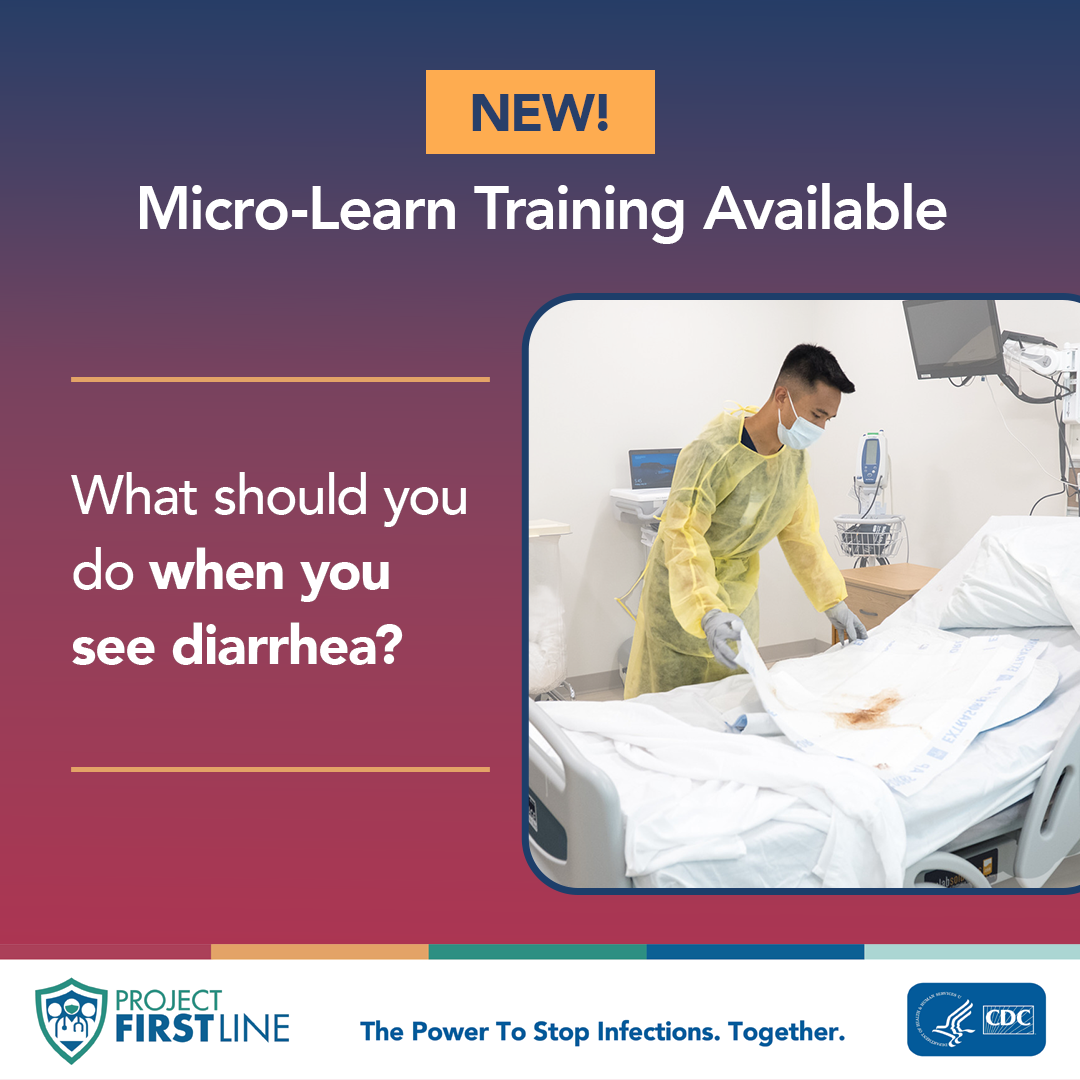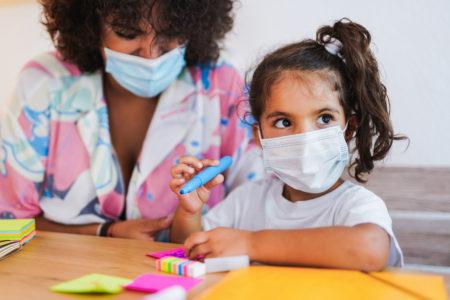
Share On Social!
CDC’s Project Firstline has developed Infection Control Micro-Learns – a series of guided infection control discussions that can be easily incorporated into team meetings or huddles facilitated by an experienced team member with infection control expertise.
Each micro-learn focuses on a single infection control topic and connects these concepts to immediate, practical value.
With the help of these micro-learns, healthcare workers can easily apply key points to their daily work and perform the recommended actions to keep germs from spreading.
Let’s explore Infection Control Micro-Learn on diarrhea!
What to Do When You See a Patient with Diarrhea
Diarrhea is loose, liquid stool.

Some people have chronic diarrhea, it is their normal bowel function. When diarrhea comes on suddenly this is often a sign of a bacterial or viral infection of the gut. Causes of diarrhea include:
- difficile
- Norovirus
- rotavirus
- Diseases affecting your bowels
- Procedures on your bowels
Whatever the cause, all stool, including diarrhea, is full of germs.
Until proven otherwise, healthcare workers should assume that diarrhea is infectious and take infection control actions.
Use gloves when working with a patient who has diarrhea or when in their environment.
Workers might also need a gown if there’s a risk of getting stool on clothes if they, for example, help a patient with personal care or leaning over their bed.
If diarrhea is accompanied by vomiting you may also need a mask and eye protection to help avoid inhaling viral particles.
Clean hands immediately after interacting with a patient or their environment, and immediately after taking off gloves. Workers can use either hand sanitizer or soap and water, but if your hands are visibly dirty, then soap and water is preferred.
Check out the full micro-learn on diarrhea to find out exactly what healthcare workers should do individually and as a team to prevent the spread of infection on the frontlines.
How Can You Promote Infection Control in Your Healthcare Setting?
Help keep yourself, your colleagues, and your patients safe from infectious disease threats by building on your infection control knowledge!
To show your dedication, sign this pledge to complete an infection control training or activity through CDC’s Project Firstline!
You can also share infection control training opportunities with healthcare colleagues via LinkedIn with our Project Firstline social media toolkit.
Access more information about infection prevention and control in healthcare by visiting resources from CDC Project Firstline.
Salud America! at UT Health San Antonio is working with the National Hispanic Medical Association to bring Project Firstline infection control educational content to healthcare workers, so they are equipped with the knowledge they need to protect themselves, their facilities, and their patients (Latinos and all communities) from infectious disease threats in healthcare settings.
Check out some of the articles from this partnership:
- What is Project Firstline?
- What is the Goal of Infection Prevention and Control in Healthcare Settings?
- What is Ventilation and Why Does It Matter?
- Contact Time: What is It and How Does it Impact Infection Control?
- The Surprising Difference Between Cleaning and Disinfection
- What’s a Respiratory Droplet and Why Does It Matter?
Check out some of the Latino healthcare workers who are heroes for infection control:
- Anna Valdez: Tackling Infection Control with Education from Classroom to Clinic
- Wanda Montalvo: Preventing Infections in Community Health Centers, Latino Communities
- Ricardo Correa: Endocrinologist and Infection Control Leader for the Latino Community
- Jorge Moreno: Infection Control Hero for Spanish-Speaking Latinos and All Patients
- Veronica Ramirez: Keeping Her Community Health with Infection Control
- Juanita Mora: A Voice for the Latino Community and Infection Control
LEARN MORE ABOUT PROJECT FIRSTLINE!
Editor’s Note: This article is part of a collaboration between Salud America!, the National Hispanic Medical Association, and the CDC’s Project Firstline. To find resources training materials, and other tools to bolster knowledge and practice of infection control, visit Project Firstline and view Salud America!’s infection control content
By The Numbers
142
Percent
Expected rise in Latino cancer cases in coming years



